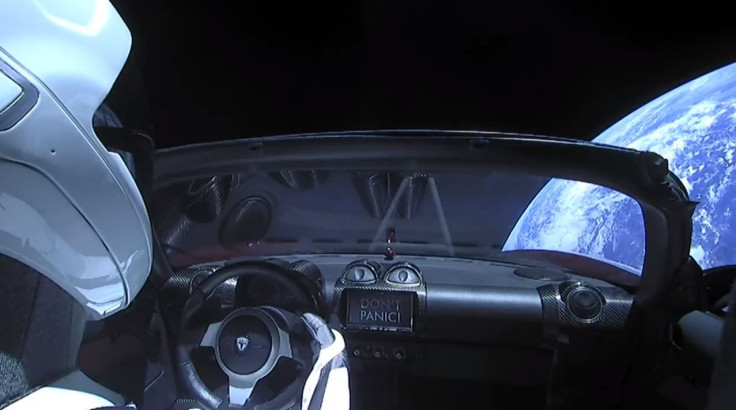Elon Musk’s Tesla Roadster May Crash Down To Earth Eventually, Scientists Say

People who are concerned about an asteroid crashing into Earth and destroying our planet might be better off worrying about the Tesla Roadster Elon Musk launched into space earlier this month.
A team of scientists calculated the path of the Tesla CEO’s electric car over the next few million years, based on its current trajectory, the gravitational fields it will encounter and the movements of other bodies in the solar system. According to the researchers, the car has a 6 percent chance of crashing into Earth within a million years and a 2.5 percent chance of crashing into Venus, our planetary neighbor.
The University of Toronto explained that the Tesla will also come close to Earth in 2091, when it will drive within a couple hundred thousand miles of us.
The analysis comes two weeks after SpaceX, where Musk is also CEO, launched its enormous Falcon Heavy rocket on a maiden voyage, carrying Musk’s Roadster with a dummy astronaut named Starman in the driver’s seat as test cargo. The company’s plan for the car was to boost it into Mars orbit — orbiting the sun at the distance of Mars. But the CEO reported later on that SpaceX had overshot and the car was instead destined for an orbit in the asteroid belt between Mars and Jupiter.
Before the launch, Musk had also projected the Roadster’s route would keep it in space for about a billion years.
The new study, which has not yet been published, looks into the possibility that the journey will be cut short. It is based on simulations that project where the car headed and what forces it will encounter during its trip.
According to the scientists, the Tesla might expect to remain in space for “a few tens of millions of years.” There is, however, a degree of uncertainty when it comes to its ultimate path and whether it will ever meet Earth again.
“Given that the Tesla was launched from Earth, the two objects have crossing orbits and will repeatedly undergo close encounters,” the study says. “While the impact probability of such Earth-crossing objects can be estimated precisely on human timescales, the roadster’s chaotic orbit can not be accurately predicted on timescales of many encounters.”
Although there is a chance the Tesla will crash into Earth in the next million years, the researchers say such a collision probably won’t happen for a while — and that most of the car will probably burn up in the atmosphere.
“It will likely end up colliding with Earth or Venus, but there’s no need to panic since the probability of that happening even within the next million years is very small,” researcher Hanno Rein said in the Toronto statement. “Although we are not able to tell on which planet the car will ultimately end up, we’re comfortable saying it won’t survive in space for more than a few tens of millions of years.”
© Copyright IBTimes 2024. All rights reserved.





















